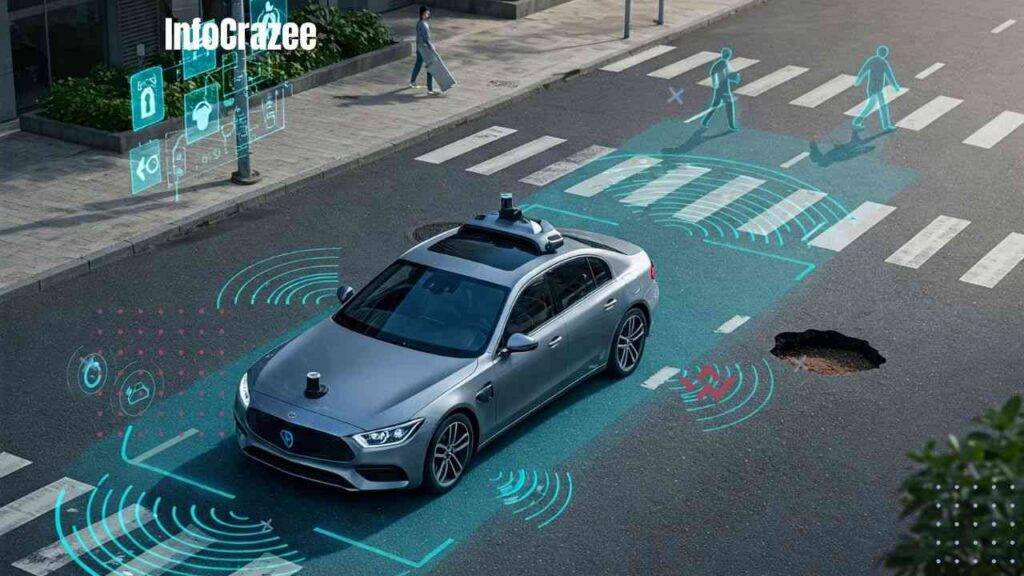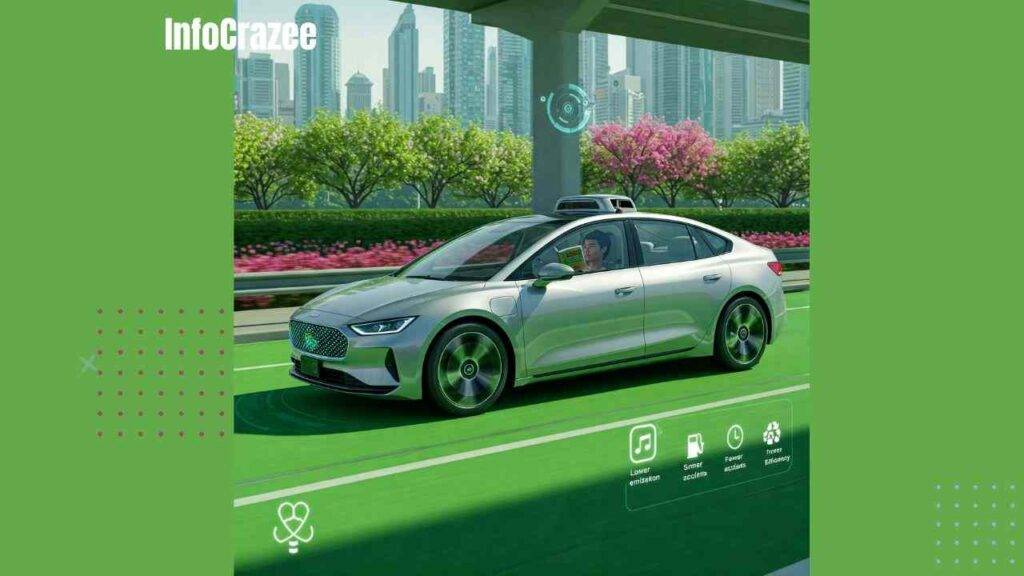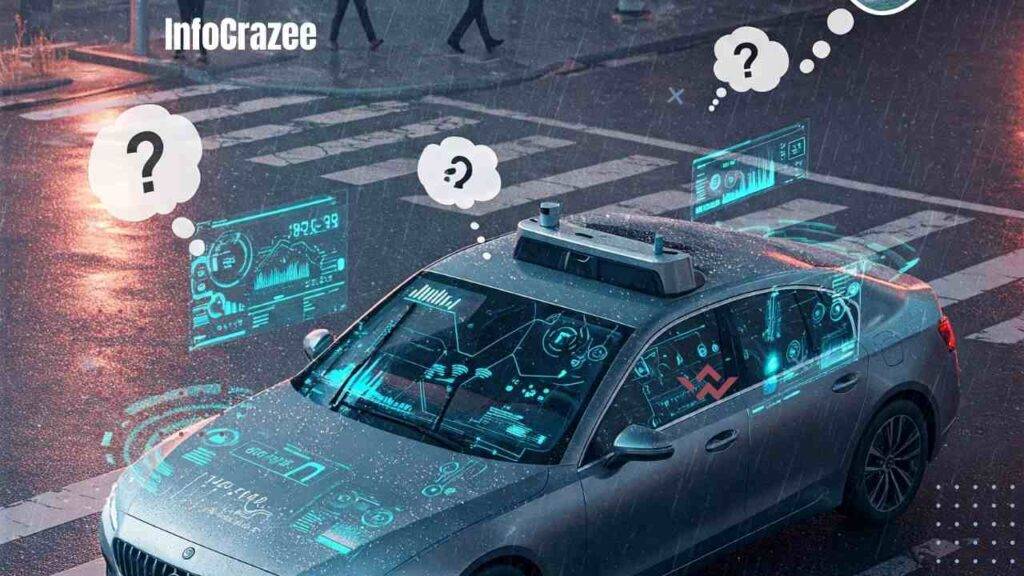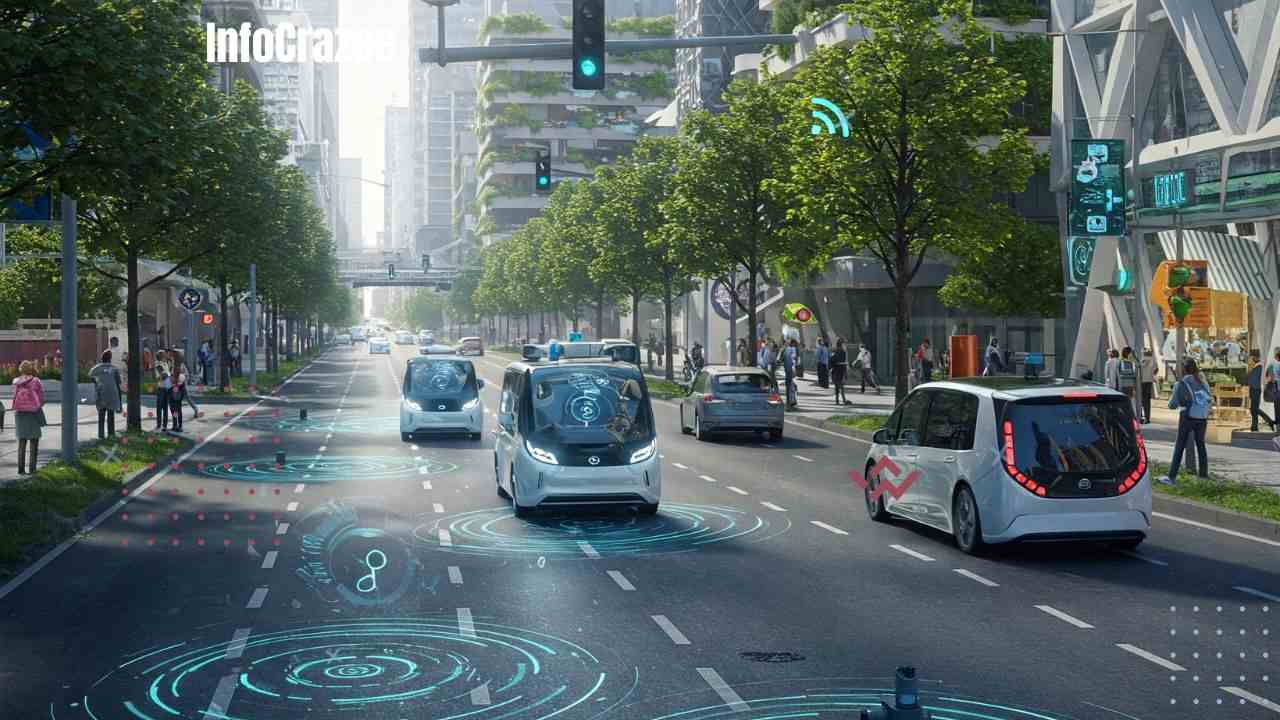Autonomous Vehicles: How AI Is Driving the Future of Cars—And the Roadblocks Ahead
Self-driving cars once sounded like something out of a sci-fi movie. Now? They’re becoming a real part of the world around us. Whether it’s Tesla’s Autopilot or Google’s Waymo, AI is behind the wheel—and it’s changing the way we think about driving.
But it’s not all smooth highways. While AI is making cars smarter and safer, there are still bumps in the road. Let’s explore what’s happening, what’s working, and what still needs fixing.
What Are Autonomous Vehicles, Exactly?
Autonomous vehicles (or AVs) are cars that can drive themselves using a mix of sensors, cameras, radar, and artificial intelligence. They’re designed to make decisions on the road—like when to stop, speed up, or change lanes—without a human touching the wheel.
There are different levels of autonomy:
- Level 1–2: Driver-assistance (like cruise control or lane-keeping).
- Level 3: The car can drive itself in some situations, but a human must be ready to take over.
- Level 4–5: Full self-driving. No human needed, even in complex traffic.
How AI Makes Self-Driving Cars Smarter
AI is the brain behind autonomous vehicles. It helps cars “see,” “think,” and “act” in real time. Here’s how:

1. Computer Vision
AI uses cameras and sensors to detect road signs, pedestrians, traffic lights, and more. This is called computer vision—it’s how the car sees the world around it.
2. Decision-Making Algorithms
Just like a human decides whether to speed up or slow down, AI uses data and probability to make split-second decisions. For example, if someone suddenly crosses the street, the AI decides whether to brake or swerve.
3. Machine Learning
AVs are constantly learning from their environment. The more data they gather, the better they get at predicting what might happen next—like spotting a jaywalker or an unexpected pothole.
Real-World Examples of AI-Driven Vehicles
Let’s bring this into real life with a few cool examples:
- Tesla’s Autopilot: Offers lane changes, adaptive cruise control, and basic self-driving features.
- Waymo (by Google): Has a fleet of self-driving taxis already operating in some U.S. cities.
- Amazon’s Zoox: A fully autonomous vehicle built for ride-sharing from the ground up—no steering wheel at all!
Benefits: Why AI in Cars Is a Big Deal
There’s a lot to get excited about when it comes to AI-powered vehicles.

Fewer Accidents
Most road accidents happen because of human error. AI doesn’t get tired, distracted, or drunk. That means safer roads for everyone.
More Free Time
Imagine relaxing, reading, or getting work done while your car handles the commute. Sounds nice, right?
Greener Roads
AI can optimize routes and reduce unnecessary braking or idling—leading to better fuel efficiency and lower emissions.
Roadblocks: What’s Holding Us Back?
Of course, it’s not all smooth cruising. Self-driving cars still face a number of challenges:
1. Safety and Trust
Would you feel comfortable in a car with no driver? Many people aren’t ready to fully trust AI on the road—especially after a few high-profile accidents.

2. Complex Driving Conditions
Heavy rain, snow, or unusual road layouts can confuse even the best AI systems. Human drivers can adapt more easily (for now).
3. Legal and Ethical Questions
Who’s responsible if a self-driving car crashes? The owner? The company? These questions still don’t have clear answers.
4. Cost and Access
These vehicles are still expensive and not widely available. It may take time before the average person can afford or use one.
What the Future Might Look Like
Here’s what we might see in the next 5–10 years:
- Autonomous trucks delivering goods across highways.
- Self-driving taxis in busy cities.
- Traffic flow optimization using connected vehicles talking to each other.
- AI learning from real-time data to keep improving without human input.
In short: we’re not quite there yet—but we’re getting closer every day.
💬 Final Thoughts
Autonomous vehicles are one of the most exciting examples of how AI is reshaping our world. They promise safer roads, less stress, and smarter transportation. But getting to a fully autonomous future isn’t just about tech—it’s also about trust, regulation, and smart design.
As we buckle in for this ride, it’s clear that AI isn’t just changing how we drive—it’s changing how we live.
FAQs
1. Are self-driving cars 100% safe?
Not yet. While AI is great at avoiding mistakes humans often make, it can still struggle in unusual situations or bad weather. It’s getting better, but we’re not at 100% safety—yet.
2. Can I buy a fully autonomous car today?
Not exactly. Many cars have advanced driver-assistance systems (ADAS), but fully self-driving cars (Level 5) aren’t available to the general public just yet.
3. Will AI take away driving jobs?
Possibly, over time—especially for delivery and trucking. But it will also create new jobs in areas like AI maintenance, system monitoring, and smart infrastructure design.






